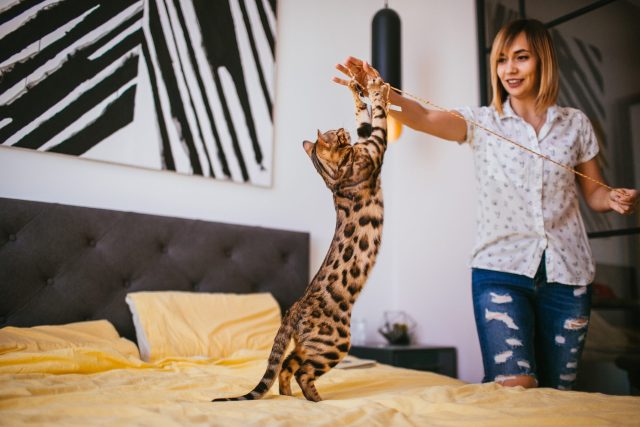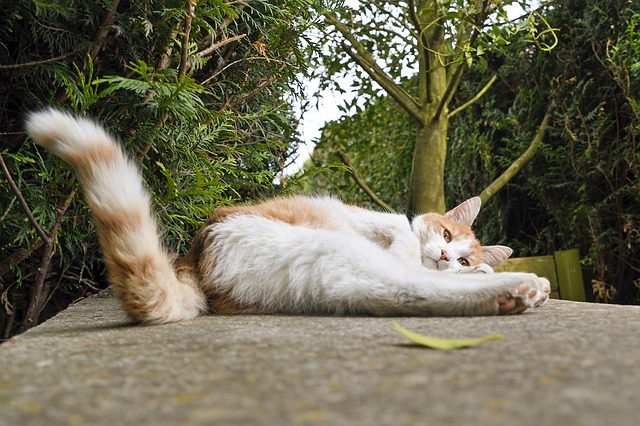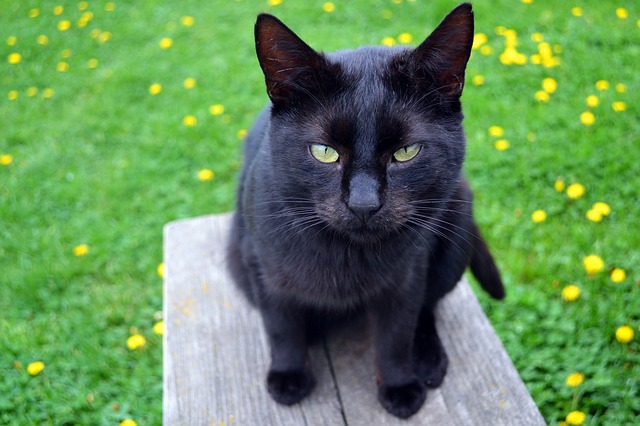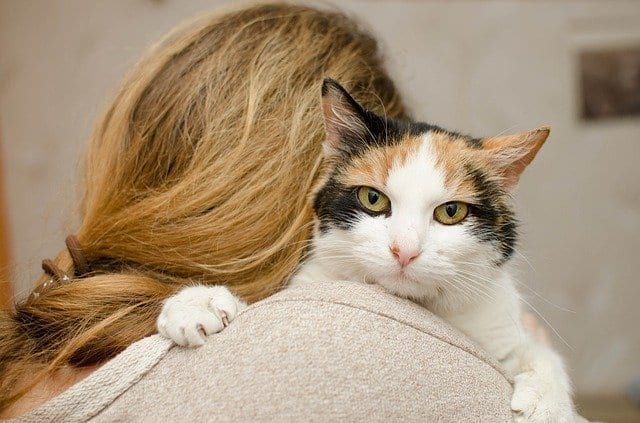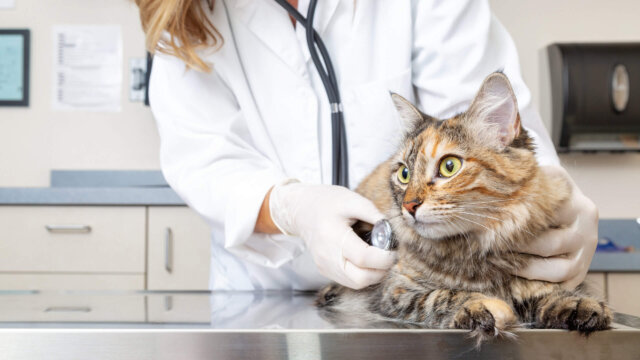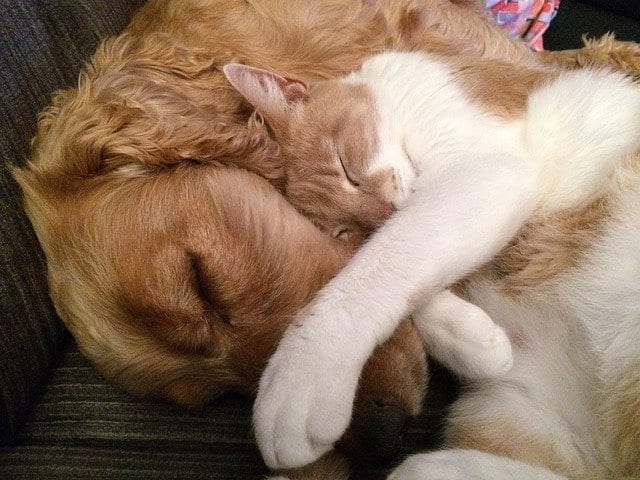Felines are creatures of mystery and while there is still much left to puzzle out about them, there are some cat myths time and science have debunked.
Over time, cat parents have learned a lot from sharing their homes with felines, proving to be experts in busting cat myths. Getting to know their furry family members unlocks so many secrets. Yet, never will we know the full wonder that is a cat’s mind. At least we’ve learned truth enough to keep cats happy, healthy, and safe. As devoted minions, we will also continue striving to enrich their lives further because cats are a special magic we just don’t deserve!
To give your cat an even better life, here are 19 cat myths to stop believing.
Cat Myths Debunked
Myth #1: Cats have nine lives.
Fact: It’s been long believed cats have nine lives due to mystical good luck, but the hard truth behind this cat myth is unknown. Looking back through the ages could shed some light on the adage though.
One theory behind the 9 lives myth originates in the religious beliefs of Ancient Egypt. The Great Ennead of Heliopolis was a group of nine major Egyptian deities, including the sun god Atum-Ra. Legend tells Atum-Ra took the form of “the great cat Mau” to battle the chaos serpent Apophis.
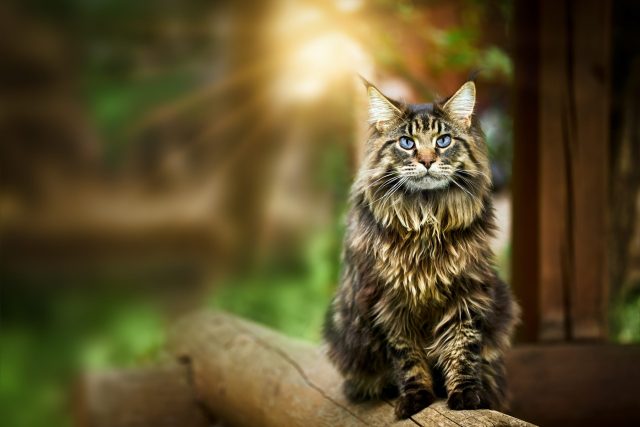
Another theory? Celtic folklore has a long history with cats and one feline fairy cat might be the answer behind the nine lives myth. The Cat Sìth are said to be witches able to change into cats and then back again. But, on the ninth change to cat, the witch would live evermore as a faery feline.
The myth about cats having nine lives has been further supported by the almost magical way cats seem to survive harrowing accidents. They may have a strong survival instinct that gets them out of potentially dangerous situations, but cats are by no means invincible.
Myth #2: Cats always land on their feet.
Fact: Thanks to the righting reflex, many cats have the natural ability to twist their bodies and contort themselves in ways that amaze us, which helps further this cat myth. While felines usually right themselves while falling, they don’t always land on their feet. Though they’re full of grace and agility, accidents can happen, and falling from a significant height can actually hurt them, even when land on their feet. More often than not, cats do land safely, but they still worry us with their daring feats.
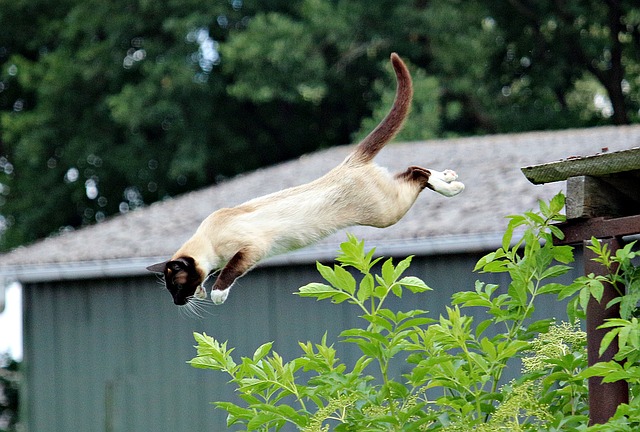
Myth #3: Cats can’t be trained like dogs.
With the right techniques, cats can be trained to do a lot of the same tricks dogs do. And they’ll do it with feline style! Cats learn best through positive reinforcement and are motivated to training with clickers and treats. Kitties easily learn to come when called, sit, lay down, and roll over. They can even be taught to go to the bathroom in the toilet and flush when they’re finished. Try training a dog to do that!
Myth #4: A wagging tail is a sign of a happy cat.
Everyone knows a dog is usually feeling good when they wag their tail back and forth (but not always!), and that interpretation is often passed on to cats. But as cat lovers know, cats and dogs are like night and day! Cat tail movement meanings drastically differ from those of dog tail wags. When your cat wags or twitches their tail, it’s most likely because they’re annoyed. If you’re petting a cat and their tail starts moving, check out what the rest of your cat’s body language is telling you.
Myth #5: Pregnant women need to stay away from cats.
Fact: Toxoplasmosis is a serious disease that can be transmitted from a pregnant mother to her fetus. There’s a common misconception that it’s also passed from cat to human. Pregnant women have a higher chance of contracting toxoplasmosis by eating meat than they do from cuddling their cat.
The only cat-related pregnancy risk comes when it’s time to clean out the litter box. Toxoplasmosis can be found in infected cat feces, so pregnant women are encouraged to get someone else to clean the kitty litter, or at least wear gloves and wash their hands afterward. Animal writer Jennifer Nelson also writes that keeping cats indoors and not feeding them a raw diet will reduce risks of transmission. Otherwise, here’s another cat myth busted.
Myth #6: Milk is good for cats to drink.
Fact: Contrary to popular belief, cats and milk is not a good mix! We’ve seen the images throughout history of cats lapping milk from saucers, but this cat myth is one that needs to be stopped in its tracks for the sake of feline health.

Milk is not good for your cat’s digestion. Although your cat begs for your ice cream bowl, its important not to give in to their demands. A cat’s digestive system doesn’t have the ability to break down lactose the way a human’s can, so by giving your cat milk you are subjecting them to serious gastrointestinal issues.
Many cats are lactose intolerant, and drinking regular cow’s milk can lead to serious digestive upset. Not every cat is lactose intolerant, but Pets Web MD says,
“Cats don’t need milk, and the potential problems outweigh the potential benefits.”
Myth #7: All cats hate water.
Fact: There are certain cat breeds determined to break the stereotype that cats are afraid of water. Bengals, Maine Coons, and Savannahs are all more likely to dash toward a running water faucet than away. And then comes the slippery mess of an intelligent cat splashing in the water! These water-loving cat breeds quite enjoy getting baths and playing in pools and puddles. Some don’t even mind a good swim!
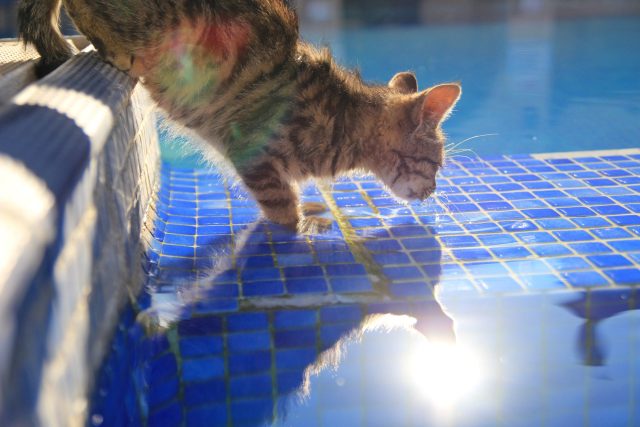
Myth #8: Black cats are bad luck.
Fact: In many western cultures, a black cat crossing your path is considered a sign something wicked this way comes. But this cat myth is certainly not true! There’s no clear origin story to explain this unfair superstition. But history has documented the fact these beautiful ebony kitties caught a bad wrap from superstitious folk dating all the way back to the 1500s. During this time, many people become wary of black cats due to their association with witchcraft.
According to urban legend, it was believed that women who were thought to be witches assumed the form of a black cat at night to be safe from the town’s people. Sadly, this theory carried on throughout the centuries. In turn, black cats were thought of in a negative light in the United States. On the contrary, in other cultures around the world, the presence of a black cat is thought to signal good luck, fortune, or prosperity. Cat lovers agree!
Myth #9: Declawing cats is no big deal.
Fact: Cats scratch carpets, furniture, walls, and just about anything else they can sink their claws into. It’s what they do thanks to their natural instincts.
Declawing is not a viable solution for a cat’s scratching behavior. There is a misconception that declawing is simply a more extreme version of trimming a cat’s nails. This is false! Declawing is actually a surgical amputation that removes the last knuckle of the cat’s paw. To declaw each nail on the front paws, that means the cat endures ten amputations. Many cats who undergo declawing live the rest of their lives with chronic pain, and the practice is banned in many cities and countries.
Myth #10: Cats are too independent to make good animal companions.
Fact: Cat parents will happily debunk this cat myth! While cats are known for their independence, that doesn’t mean they don’t love their humans. Felines form powerful bonds with their family members, and most cat parents would never call them “just pets.” They’re friendly and loving, and they rely on their owners to not only meet their basic survival needs but to keep them happy. In addition to providing emotional support to their humans, there are even therapy cats responsible bring comfort to people in hospitals.
More Cat Myths Busted, Keep Scrolling!
Myth #11: A cat only purrs when they are happy.
Fact: While cats do in fact purr when they are content, they also purr for a few different reasons as well. A unique quirk, purring is a special trait that all associate with the feline kind. But while cats purr away in their happiness, they can also purr when they are stressed, frightened, or even during childbirth.
Did you know a cat’s purr is good for healing? Scientific American reports the frequency of feline purrs can promote the healing of human bones and muscles.
Myth #12: Cats are nocturnal animals.
Fact: While some cats seem to come alive at night, usually right when you’re ready for bed, cats are not totally nocturnal by nature. Felines are considered crepuscular, meaning they’re most active at dusk and dawn. Despite your cat having keen eyesight at night thanks to an abundance of eye rods, they cannot see in total darkness.

Myth #13: Calico cats are always female.
Fact: This cat myth is not completely false. Calico cats are mostly all female. There’s a science behind the thought which makes perfect sense for this theory. The simplified version is this: a calico cat is not a breed, but a color pattern that consists of three colors–black, white, and orange are the most common of these.
The genetic pattern which is responsible for determining color coat in a cat is sex-linked, with the XX chromosomes for females; XY for males. Since female cats have the ability to show off two colors in their coats due to the XX pattern, this allows for the possibility of calico blocking patterns that you find in calicos.
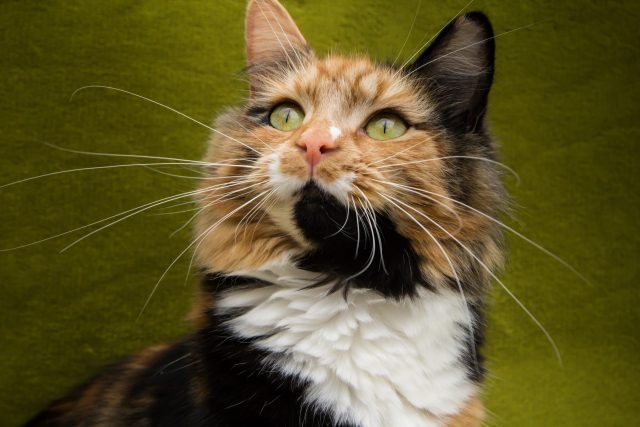
With the rare exception of a mutation that creates an XXY for a male cat, there can in fact be a male calico, too. It doesn’t happen often, but it does debunk this all-female calico theory. Coincidentally though, male calicos have proven typically sterile.
Myth #14: Cats don’t need veterinary care.
Fact: This cat myth needs to be busted to pieces! Veterinary care is good for all cats.
While cats are generally healthy, a yearly vet exam is recommended to ensure the longevity of their health. Many people believe cats don’t need medical care like dogs. And in return, many felines are not checked annually as they should be. Cats require regular vaccines (rabies, etc.) and general vet checks to be sure they remain in good health. Although cats seem super healthy, they don’t have a voice to tell you what’s wrong. And cats typically suffer in silence. Often we don’t know how sick they are until they’ve fallen extremely ill or the vet catches abnormalities in their annual check-up.
Myth #15: Cats can steal a baby’s breath.
Fact: Cats are natural healers and quite loving with their families. Despite what many think, cats are not evil by nature. Not at all! Cat parents will certainly attest to the loving nature of their kitty darlings.
But while cats aren’t out to steal a baby’s breath, allowing your cat to sleep in the baby’s nursery or sleeping area is not recommended. Not because cats are mean, but because they love to cuddle. Cats often choose their snuggle location near the face due to warmth, so this is likely why this ill-thought theory came about. Many people are smart enough to know this is by no means true, but it’s important to practice safety precautions so accidents don’t happen.
Myth #16: Cats don’t like dogs.
Fact: There is a fine line with this cat myth. While some cats aren’t crazy about dogs, if properly introduced and in a way both animals find non-threatening, the two can certainly coexist in peace. Cats like their space and don’t want a dog, or anyone else for that matter, in their face non-stop. With this in mind, a cat-friendly dog that is respectful of a cat’s space is not a problem on a regular basis. You may even find that cats and dogs can actually be the best of friends in the right environment.
Myth #17: Every cat likes catnip.
Fact: Oddly enough, this little green herb is so powerful it’s been known to get ahold of even big cats, too! Even lions, tigers, and cougars have all responded to nepetalactone, which is the active ingredient found in catnip. All cats do respond differently to this herbal member of the mint family, with some cats going crazy for the stuff while others seemingly turn up their noses at catnip.
Fun fact: a kitten must be at least 3 months of age before the can feel the effects of catnip. But seeing as kittens are naturally a little cuckoo, they really don’t have a need for the stuff! It’s important to remember that while cats are drawn to catnip, as with anything else, moderation in catnip exposure is recommended.
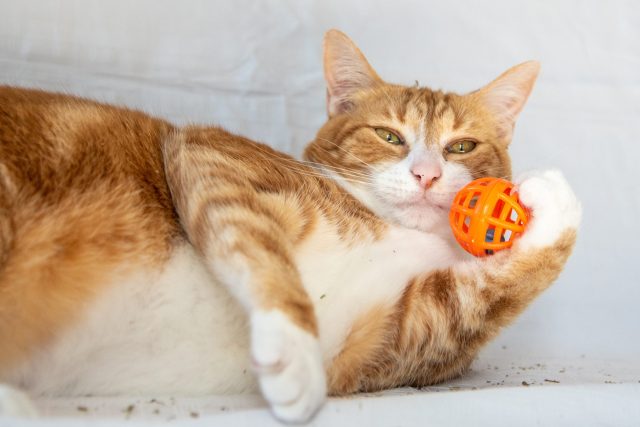
Myth #18: Cats’ mouths are cleaner than humans.
Fact: This cat myth is a tricky one. VetWest Animal Hospitals explains the bacteria in feline mouths is similar to that found in human mouths. Generally, cat mouths are no dirtier than ours. But these experts remind us, cats are predators. If your cat goes outdoors, she likely hunts. Meaning whatever she’s recently eaten might still be lingering on her lips. Take caution in offering your kitty kisses after she’s been outside.
Myth #19: Cats don’t need exercise.
Fact: Cats, especially those living indoors, need daily exercise. This can be achieved through interactive play, teaching your cat to walk on a harness and leash, or even an exercise wheel for extremely active cats. Check out ways to keep your cats entertained and engaged.
